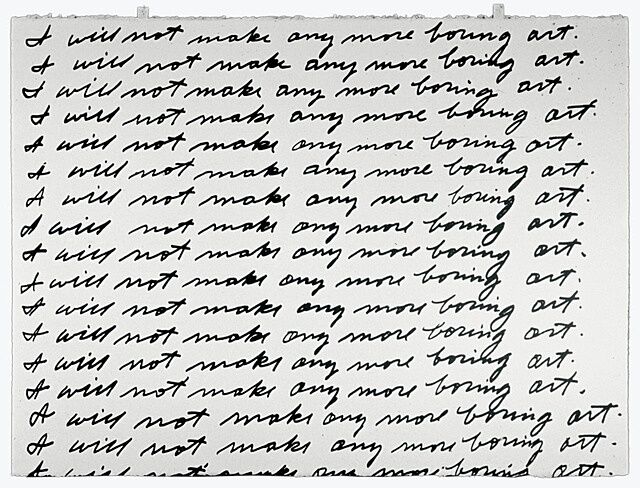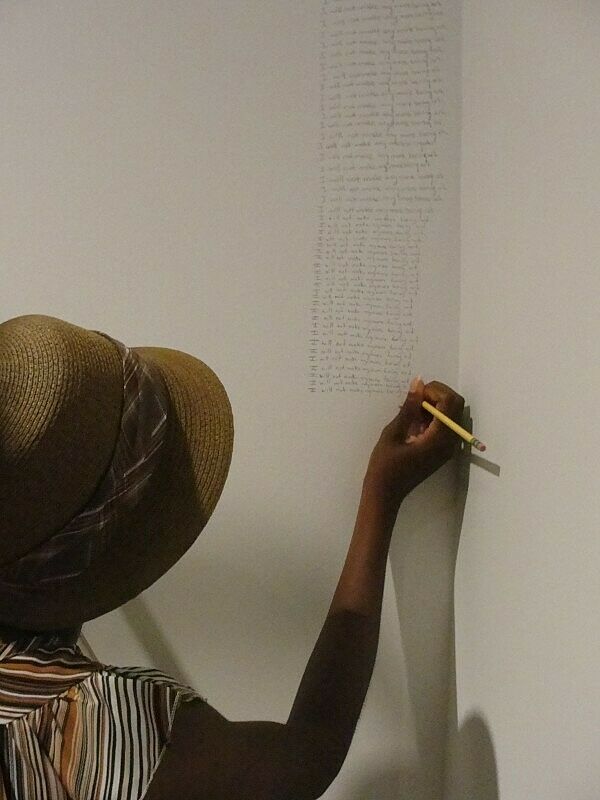The Writing Is On The Wall: John Baldessari’s “I Will Not Make Any More Boring Art”
Jul 9, 2010
In conjunction with Off the Wall: Part 1—Thirty Performative Actions, John Baldessari’s I Will Not Make Any More Boring Art will be re-performed for the first time since 1971. To realize the work, the Whitney has invited art students to write the sentence “I will not make any more boring art” on two walls of the Museum’s gallery. According to Baldessari’s rules, each student can write as few or as many iterations of the pledge as they like, in whatever size and style of handwriting.
The work was originally made by students in 1971 at the Nova Scotia College of Art & Design in Halifax, Canada, a sister school of CalArts where Baldessari was teaching at the time. The college commissioned the artist to create a work, and unable to fund his own trip to Canada, Baldessari decided to ask student volunteers to write the phrase—drawn from the margins of his personal notebooks—on the walls of the gallery. The artist also sent along a handwritten page of the phrase, from which the students produced prints (see first image).
Although in his initial proposal the artist called the work a “punishment piece,” he stipulated that he wanted the action to be “instructive for others” and only performed by volunteer students (not necessarily guilty of making boring art themselves). In this way, the work acts more as a pedagogical tool than as an empty chastisement to be endured. By inviting students to become part of his work, Baldessari shifts the traditional boundaries between teacher and student.
The artist’s desire to have the performers methodically make this vow in the gallery’s space was also a testament to Baldessari’s dissatisfaction with painting of the early seventies. While the repetitive, mundane exercise of re-writing a phrase served as a means to instill an important value in the students, it also conflicted with the instruction itself—to not make boring art—and actually put it on the same walls usually reserved for painting. The fact that young art students were making this subversive gesture in the artist’s place suggested that a new, more conceptual art practice was looming on the horizon.
Come see students writing during the Museum’s hours on Wednesdays, Thursdays, and Fridays in July.
By Sarah Meller, Interpretation and Research Assistant


